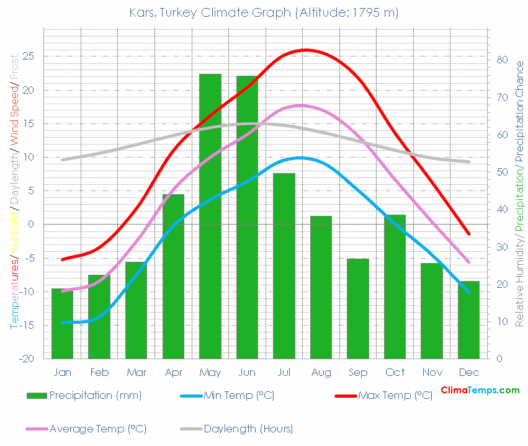China, a vast expanse of land, exhibits an extraordinary tapestry of climates that mimic the multifaceted characteristics of its geographic diversity. From the frigid reaches of the northern territories to the sultry and tropical southerly regions, the climate of China presents an intricate panorama that is not only compelling but also pivotal in understanding the larger implications of climate change. This duality raises an intriguing question: how does the climate impact the lives of the people residing in such a diverse geographical space? Furthermore, what challenges arise from these climatic variances as the country faces the omnipresent threat of global warming?
To commence this exploration, it is essential to break down the climatic zones within China. Broadly speaking, the nation can be divided into several climatic regions: the temperate zone in the north, the subtropical zone in the center, and the tropical zone in the south. Each zone carries its unique traits, resulting in distinct weather patterns, seasonal variations, and ecological systems.
The temperate north is often characterized by four distinct seasons – spring, summer, autumn, and winter. Regions such as Beijing and its neighboring provinces experience dry, cold winters, with temperatures plummeting below freezing, while summers can be quite warm, sometimes exceeding 30°C (86°F). This stark contrast between seasonal temperatures not only influences daily life but also significantly impacts agricultural cycles, energy consumption, and even cultural festivities.
As we transition to the fertile central region, the influence of the subtropical climate becomes evident. This area receives ample rainfall, with summers punctuated by oppressive humidity. The Yangtze River Basin, a key agricultural zone, thrives under these subtropical conditions, producing rice and various fruits. However, the question arises: how does agriculture adapt to the increasingly erratic weather patterns induced by climate change? Droughts and floods pose substantial threats, challenging farmers to innovate and adjust to the unpredictability of the environment.
Venturing further south, we encounter China’s tropical climate. Here, in regions such as Hainan and parts of Guangdong, the weather remains warm year-round, characterized by lush vegetation, a plethora of biodiversity, and seasonal monsoons. The tropical zone is not only vital for ecological balance but also for the economy, with agriculture, tourism, and fisheries thriving under favorable climatic conditions. Yet, this abundance raises a conundrum: as global temperatures rise, how will rising sea levels and intensified storms challenge the very foundations of the tropical economy?
While examining these climatic variations, it is crucial to acknowledge the interplay between geography and climate. The towering Himalayas, the expansive Gobi Desert, and the winding rivers throughout the landscape all possess profound influences on weather patterns. The topographical features create microclimates, fostering unique ecosystems that require specific adaptation strategies. How do local flora and fauna adapt to the ever-changing climate? This complicates conservation efforts, as certain species may face extinction while others may thrive in new conditions.
Climate change is not just a theoretical construct; it is a tangible reality that is progressively manifesting across the globe. In China, rising temperatures have been observed, accompanied by an increase in extreme weather events. From severe droughts that ravage crops to devastating floods that drown rural communities, the climatic upheaval places immense strain on water resources, food security, and human livelihood.
Moreover, China, as a significant global player, faces the dual challenge of economic development and environmental sustainability. Rapid industrialization has led to a surge in greenhouse gas emissions, exacerbating climate change and breathing life into the burgeoning movement for green policies. The transition towards renewable energy sources is not merely a trend but an urgent necessity. How can China reconcile its growth ambitions with ecological stewardship? This is a crucial question that policymakers must address as they seek innovative solutions to mitigate the looming climate crisis.
China’s commitment to international climate agreements and its ambitious goals for carbon neutrality by 2060 epitomizes its recognition of the climate challenge. A striking interplay between commitment and action is paramount. Concrete measures—such as afforestation, investments in clean technology, and reforms in energy consumption—are paramount to translating ambition into tangible results. How effectively is China navigating this landscape of challenges? And what role do community-driven initiatives play in this endeavor?
Local communities, often at the frontline of climate impacts, possess invaluable insights and resilience strategies that are essential for adaptation. Traditions, local knowledge, and sustainable practices intertwine to forge pathways toward greater resilience against climatic adversities. The grassroots level becomes a critical arena for action, highlighting the importance of inclusive approaches in climate policy. How can central authorities facilitate and amplify local innovations to create a harmonious narrative of adaptation?
In conclusion, the climate of China, from its temperate north to the tropical south, is emblematic of a country grappling with the profound implications of climate change. The variations in climate not only shape the environment but also reverberate through society, economics, and culture. As this nation navigates the complexities of its diverse climatic tapestry, the questions posed underline the imperative for innovative solutions and collaborative efforts. Navigating the path to sustainability will undoubtedly present challenges, necessitating a robust commitment to reimagine the legacy of climate action. The interplay between policy, community resilience, and environmental stewardship will ultimately determine the fate of China and its future generations.







